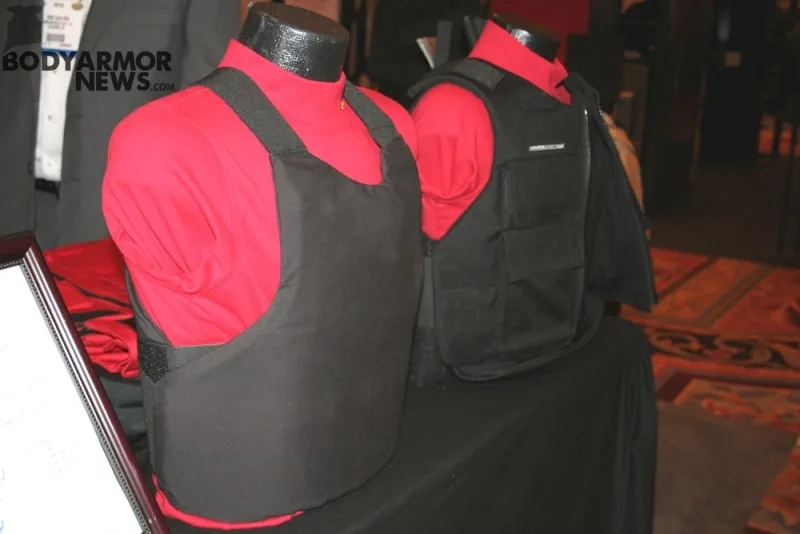How can you select the right one when you need to buy body armor?
Law enforcement that opt not to wear body armor on a regular basis are up to four times more likely to be killed from a gunshot wound to the stomach than those who do wear their body armor. That’s according to various studies conducted by the Journal of Occupation and Environmental Hygiene. This is why it’s so important to ask questions when you need to buy body armor.
One of the most difficult types of protection that officers, especially correctional officers, need is protection from spikes and knives. The reality is that there is no currently available vest guaranteed to be 100% stab-proof or even bulletproof. However, there certainly is ballistic- and stab-resistant body armor that does provide abundant protection against a broad range of handgun and rifle fire as well as bladed and spiked weapons.
You need to ask yourself four questions:
1. Is the body armor comprised of the best ballistic materials?
When you buy body armor, you want your ballistic vests to catch the bullet, absorb it and then disburse the energy of the impact through the vest. When a bullet hits an object, it’ll deform and send the energy into the fibers of the vest. Each ballistic material layer will absorb the impact until the bullet completely stops.
Kevlar fiber materials have undergone some significant changes over the years, and these days, it can offer protection from both spike and blade threats as well as ballistic threats. This protection is offered thanks to the lamination and melding together of many ultra-thin fiber layers.
Dyneema® and Spectra® are also being used in body armor. These are two ultra-high-molecular-weight polyethylene (UHMWPE) materials with 15 times the strength of steel while still being soft and flexible. Teijin Aramid recently introduced its Twaron® ComForte SB3 an ultra-microfiber, a very lightweight and flexible solution. With all these advances in body armor, buyers must carefully evaluate their options based on the threats they are most likely to encounter.
2. Does the body armor have an NIJ rating?
One of the things you’ll notice when you look for and buy body armor is the National Institute of Justice rating. The ratings have a range of IIA to IIIA for soft armor solutions, and is based on the amount of blunt force impact body armor can withstand and stop. A rating system is applied to both stab resistant and ballistic resistant body armor.
However, in revising its body armor standards the NIJ reportedly plans to eliminate of Levels II – IV. They are also said to be implementing new nomenclature, using RF for rifle (RF I, RF II and RF III) and HG for handgun (HG I and HG II).
Each vest is tested and rated blunt trauma protection and stopping penetration, all related to the blow body suffered from the vest impact.
It’s extremely important, when you need to buy body armor, to consider these NIJ standards of body armor protection ratings, assess the protection level and have a complete understanding of the street-level ballistic threat in your location to ensure what exactly you need in body armor protection.
3 – Does the ballistic vest fit properly?
Another thing to consider when you’re ready to buy body armor is to ensure it fits properly. These vests are designed for torso protection, offering complete protection of the vital organs.
Today’s types of soft ballistic armor are very lightweight and have flexible panels. Therefore, when a person is using a vest, they’re not going to feel restricted when they bend or sit down.
The soft armor comprises of woven fiber (think Twaron or Kevlar) or Unidirectional fibers (Dyneema and Spectra). Thus, when a bullet hits the body armor, the strong fabric catch it.
Most people are under the mistaken impression that a vest can protect the entire torso – top and bottom. However, that’s not true. The armor is only designed to cover the naval area and above.
Therefore, if a person is shot or stabbed in this lower region, the chances of it being life-threatening is minimal. The vital organs and upper torso is protected.
4. How to properly care for body armor?
While technology ensures the development of better sophisticated lightweight vest fibers, these fibers are particularly vulnerable when subjected to environmental degradation. Since these fibers are subjected to environmental factors as well as wear and tear, the fibers start to break down. Some of the factors that can cause the deterioration of body armor include:
• Detergents
• Soaps
• Bleach
• Dry cleaning solvents
When you buy body armor, you want to ensure you get worthwhile warranty along with the purchase. Be sure the vest has a stipulated ballistic warranty timeline. Every single unit will have a warranty period outlined based on the manufacturing date.
If your agency has offered funding toward a body armor, make sure you do your research before you buy body armor. You want the best possible protection – a product that ensures your safety while you wear it. Price should never matter; your life does.









